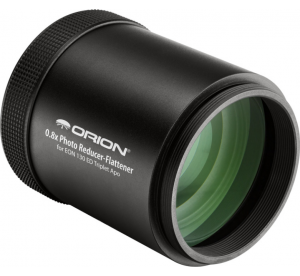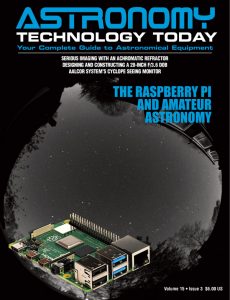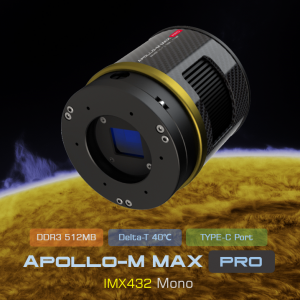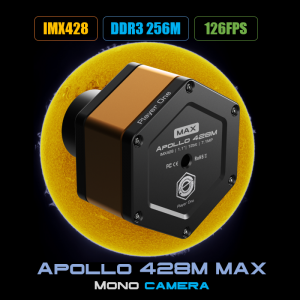Orion Telescopes and Binocular has released the Orion 0.8x Reducer-Flattener for the Orion EON 115mm and EON 130mm ED Triplet Refractors which can help ensure sharp photographs edge to edge when used with Orion’s premium EON Apos.
 All refractors produce some amount of field curvature, which results in elongation of star images at the edges of the image frame. An optical flattener is recommended to correct for this. The 0.8x Reducer-Flattener provides excellent field correction (flattening), yielding sharp stars out to the edge of even a full-frame camera sensor. The optics of the Orion 0.8x Reducer-Flattener are fully multi-coated for maximum light transmission.
All refractors produce some amount of field curvature, which results in elongation of star images at the edges of the image frame. An optical flattener is recommended to correct for this. The 0.8x Reducer-Flattener provides excellent field correction (flattening), yielding sharp stars out to the edge of even a full-frame camera sensor. The optics of the Orion 0.8x Reducer-Flattener are fully multi-coated for maximum light transmission.
The 0.8x Reducer-Flattener reduces the effective focal length of the EON 115 by 20 percent – from 805mm to 644mm (f/7.0 to f/5.6). It reduces the effective focal length of the EON 130 also by 20 percent – from 910mm to 728mm (f/7.0 to f/5.6). In both cases the Orion 0.8x Reducer-Flattener can yield a wider field and brighter images, and allowing shorter exposure times for astrophotography.
Designed solely for photographic use, the 0.8x Reducer-Flattener threads directly onto the EON’s focuser drawtube after removal of the accessory collar. This threaded connection ensures a secure fit that will not introduce flexure. The male threads on the camera side of the 0.8x Reducer-Corrector are 48mm in diameter. They are wider than standard 42mm T-mount threads. The wider 48mm reduces the likelihood of vignetting of the image, especially when using a full-frame camera sensor.
The Orion 0.8x Reducer-Flattener has a 55mm backfocus distance. To produce a focused image, your camera’s sensor must be positioned 55mm from the housing flange. Most DSLR cameras, when used with a T-ring, have the requisite 55mm backfocus distance.
For astronomical cameras, which have their sensor closer to the front opening of the camera, one or more spacer rings (sold separately) will be needed between the camera and the Reducer-Flattener to achieve the 55mm requirement. Consult your camera’s manual to determine how far back the sensor is recessed. Subtract that number from 55mm to get the length of spacing needed to reach 55mm backfocus distance.
You can learn more here.
 And to make it easier for you to get the most extensive news, articles and reviews that are only available in the magazine pages of Astronomy Technology Today, we are offering a 1 year magazine subscription for only $6! Or, for an even better deal, we are offering 2 years for only $9. Click here to get these deals which only will be available for a very limited time. You can also check out a free sample issue here.
And to make it easier for you to get the most extensive news, articles and reviews that are only available in the magazine pages of Astronomy Technology Today, we are offering a 1 year magazine subscription for only $6! Or, for an even better deal, we are offering 2 years for only $9. Click here to get these deals which only will be available for a very limited time. You can also check out a free sample issue here.



